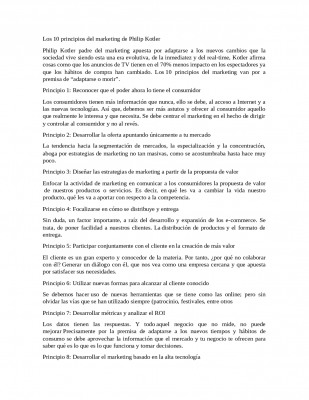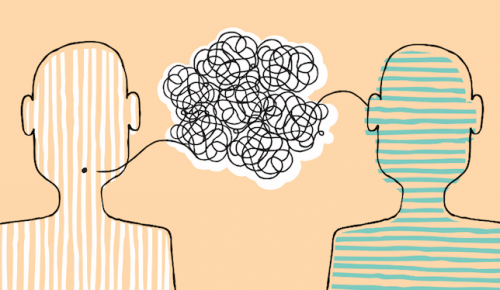
Foundational truths to help you break free from marketing, customer experience, and design.
Understanding and applying behavioral science is fast becoming the key skills in marketing and design. Learn these five psychological principles to better understand your customers and improve their experience with your brand.
In the past, we had to rely on considered best practices and common experience for most decisions that brought a product to market, but research has made it easier than ever to incorporate these findings into our work.
There are some psychological principles that apply to most of us. The best? Companies can use them to improve their own Customer experience.
Here are five basics that can help you instantly improve the customer experience:
1. People prefer simplicity to complexity.
The psychology behind why simplicity is so attractive is called "Simplicity Theory.".
According to this rule, people have a propensity for simplicity and are predisposed to choose products and experiences that minimize their cognitive load.
The "Simplicity Index" is an annual ranking of brands with the least complicated user experience. (Go to index: Simplicity Index).
According to research:
- Simplicity drives love: 64% of consumers are more likely to recommend a brand with a simple and comfortable user experience.
- Simplicity drives growth: Since 2009, “simple brands” have grown in the stock market almost 7 times.
- Simplicity drives sales: 55% of consumers are willing to pay more for simple and streamlined experiences.
Make your customer experience as simple as possible and people will prefer it to the alternative provided by your competitors (even if they don't realize why).
2. People love to choose, but not if it's too much.
In a study conducted by Columbia University, a research team set up a display of jam jars. Every few hours they went from a selection of 24 different types of jam to just 6.
When there were 24 jams, 60% of potential customers stopped to hear the taste of the jam, and 3% of these bought a jar. When there were only 6 different types of jam, only 40% stopped. The interesting? 30% of them bought a jar of jam.
The conclusion? Many options attract customers, but few options convince them to buy.
The negative effects of choosing can be more important than a lost sale. Research (source) has shown that when there are too many options, customers become anxious and tend to walk away. They may even feel depressed.
Why?
It relies on a behavioral principle known as Choice Overload. The idea is that while having too few options can be good, too many options will overwhelm customers.
Try to have as many options as you need. Don't overcomplicate your customer experience because you're worried someone might think there aren't enough options.
3. People remember an experience based on its peak and how it ends.
Economist Daniel Kahneman discovered that our brains can't remember everything, so they only store what's important in memory.
One of the most important heuristics is emotion: the more intense and recent the feelings, the more memorable the experience will be.
These findings support the psychological principle known as the end-to-end rule.
The end-to-end rule states that people judge an experience based on how they felt at the top and at the end of it, not on the average of each moment of the experience. And it is true both that the experience was positive and that it was negative.
The moral? If there is a hiccup in your experience, get over it quickly and be sure to close hard.
4. People prefer relevant and personalized messages.
It seems that all brands pursue customization. In fact, 70% of brands in a recent Everstring report rated it a "top priority" because it inspires customers to take action.
But why?
The answer lies in a psychological principle known as the "Appetizer Effect," which states that people focus on the information that is most relevant to them.
A study from last year (Personalization Development Study) highlighted the ROI of personalized marketing:
- Personalized Marketing Drives Growth: Over 90% of companies with a marketing personalization strategy have seen revenue growth.
- The higher the investment, the better the returnsCompanies with more than 2x ROI have argued that personalization absorbed at least 20% of their marketing budget.
- Personalization creates long-term customer valueThe brands with the highest ROI and personalization have focused on loyalty as a main value.
The message is clear: if you want people to take action, create as personalized an experience as possible.
5. [BONUS TIP] People are afraid to try new things unless everyone else is too.
When it comes to trying something new, people feel anxious and insecure. This fear is deeply rooted in our psychology and needs a strong persuasion tactic to overcome it.
The key is a psychological principle known as "Social Proof": people tend to look at the actions of others to convince themselves to try something new.
Here are some ways to use social proof when designing an experience:
- Ask customers to identify with the crowd: People like to follow social norms, especially when they identify with the group. Describe the estimated behaviors in the community. Make them feel like "everyone is doing it except you."
- Let customers trust the crowd: One of the most effective ways to use social proof is to include product reviews and testimonials. Most people ask others for their opinion before making a purchase.
- Ask an expert to recommend your product: when experts suggest a product, customers are more likely to trust that it will work.
Improve your customer experience: the conclusions
The principles of behavioral psychology may seem difficult to apply: there are dozens of fundamental paradigms that marketers and designers must understand.
If you've never applied behavioral research to guide your strategy, the five principles outlined here are a great place to start. Design tests and confidence experiments. You will see improvements in your customer experience and therefore an increase in profits as well.
As Jeff Bezos says:
"If you double the number of experiments you do each year, you will double your inventiveness."
Jeff BezosThey may be interested in:
- The Psychology of Marketing: 10 Revealing Principles of Human Behavior
- 17 Psychological Facts About Love (Useful Tips & Tricks)
- Simplify your life with these 5 timeless principles
- Psychological effects of social networks
- Ichigo Ichie: the 10 principles of the Japanese art of living each moment
- Quitting smoking: psychological benefits

























